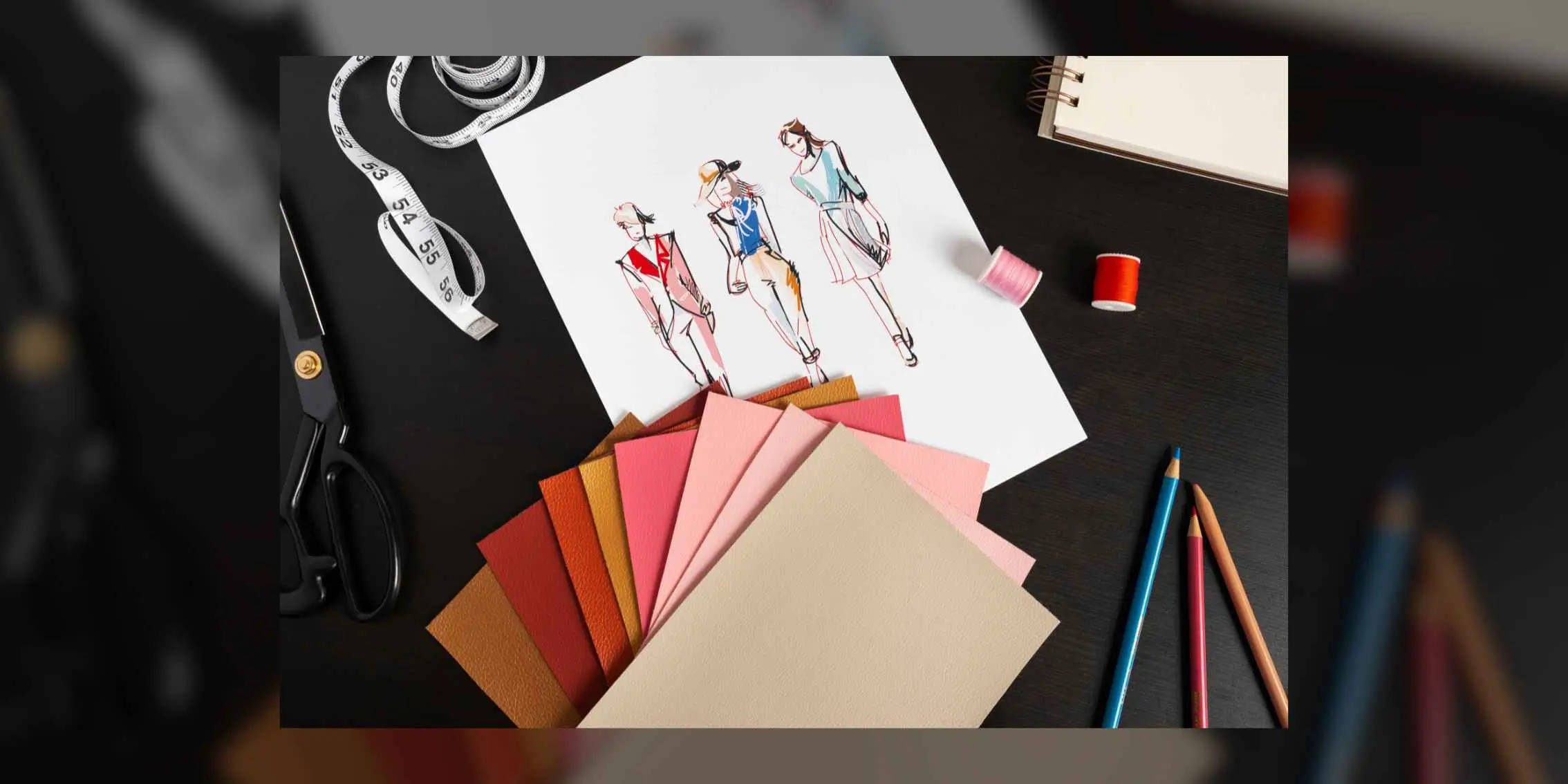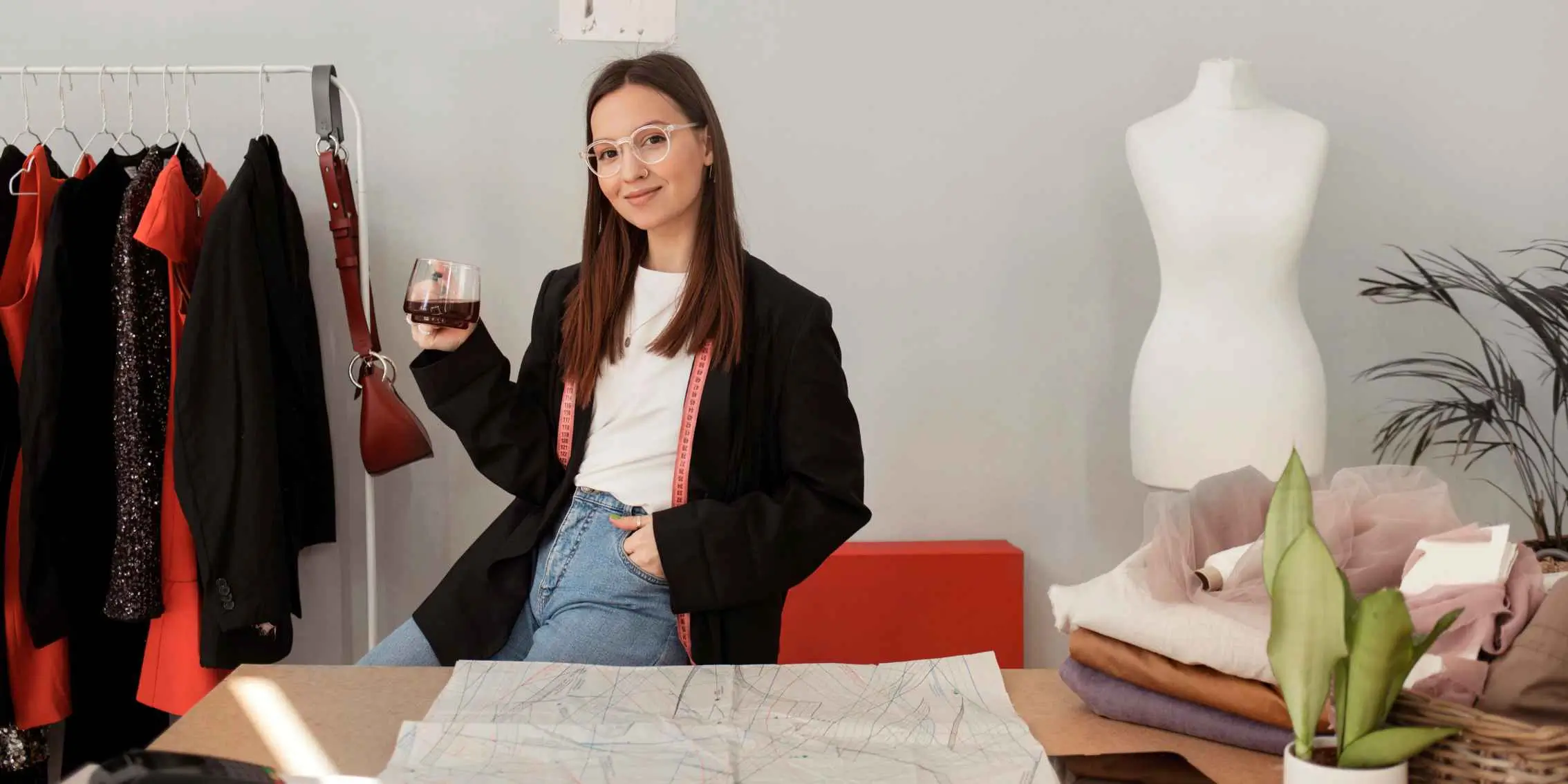
It's safe to say that draping remains at the forefront of fashion design. Calvin Klein FW25 by Veronica Leoni featured fluid, enveloping forms in draped skirts, dresses, and outerwear. Issey Miyake FW25 presented intricate fabric strips wrapping the body in sculptural drapes. Rick Owens FW25 pushed boundaries with conceptual layering, creating raw, textured draped effects from overlapping coloured sheets.
Fashion designers who excel in draping enjoy the freedom to explore innovative silhouettes, unique fabric characteristics, and visualise their concepts in three dimensions, all without being confined to the limitations of a flat pattern.
In this comprehensive guide, The Fashion Design Institute shares everything you need to know about fashion draping techniques, from essential tools and materials to the steps and techniques our students use to develop professional-grade pieces for their design portfolios.
In short
The Fashion Design Institute offers a dedicated module on Fashion Draping Techniques, equipping you with in-depth, foundational skills.
At its core, fashion draping involves positioning and manipulating fabric directly onto a three-dimensional form to create a garment's initial shape and design.
This hands-on approach allows designers to visualise and experiment with ideas quickly. It fosters creative innovation by enabling play with fabric to sculpt unique, three-dimensional designs and gain a more in-depth understanding of how different materials behave.
Far from an isolated skill, fashion draping techniques link sketching, patternmaking, and fabric selection, allowing you to test how materials respond to your vision.

Mastering fashion design draping starts with right tools and materials. Equipping your workspace with these essentials will lay a solid foundation for bringing your designs to life:
While muslin is perfect for initial drapes, knowing how silk creates fluidity, or how cotton offers structure is vital for different designs. Equally important is dress form draping, taping key body lines, and adjusting to correct measurements, ensuring an accurate fit.
Taking the time to properly set up your canvas and materials will save endless frustrations and ensure your designs translate from form to finished garment. Before you even begin pinning fabric to your dress form, successful draping for beginners hinges on these crucial first steps.
Now it's time for your designs to take shape. With your dress form prepared and materials ready, you're ready to begin the hands-on process. Follow these six steps and advice from our experts to learn how to drape fabric for fashion design.
Begin by anchoring your fabric to the dress form at key points, usually the shoulder seams and center front or back. Use sharp, thin pins to secure the muslin smoothly, maintaining proper grainlines. The goal is to establish a stable base for your design, ensuring the fabric hangs correctly and provides a true representation of your vision. Avoid excessive tension, as the fabric should fall naturally.
Once anchored, begin manipulating the fabric around the dress form. Use your hands to guide the muslin, forming the desired volume, folds, and contours. Fabric manipulation for fashion design should be an intuitive process. Sculpt the fabric directly, experimenting with different amounts of ease or tension to create your silhouette. Think about how the fabric moves and interacts with the curves of the form to define the garment's flow.
Continuously assess your drape from all angles. Adjust the fabric to refine the fit and proportion, ensuring balance and symmetry (unless asymmetry is your intent!). This involves repositioning pins, trimming excess fabric, and smoothing out any puckers or wrinkles. This iterative process allows for real-time refinement, ensuring the garment’s dimensions and comfort are precise.
Once comfortable with the foundations, you can explore more advanced fashion draping techniques:
Experimentation is key to discovering unique design elements and pushing creative boundaries.
Once satisfied with your drape, carefully mark all design lines, seam lines, and grainlines directly onto the muslin using a pencil or marker. Document your design with sketches and notes, capturing specific details, fabric choices, and construction considerations. This final step transforms your draped muslin into a comprehensive garment concept, ready for translation into a flat pattern.
Mastering these step-by-step draping techniques through dedicated, hands-on practice is exactly how The Fashion Design Institute empowers students. Just like Nicole Barry, an FDI student who found her experience "nothing short of transformative," you'll discover how the draping process helps you to hone your design skills and gain the ability to articulate your creative voice. This practical foundation is what enables aspiring designers to move from abstract ideas to real garments.
Even seasoned designers encounter challenges, and identifying common pitfalls is key to refining your fashion design draping. By understanding and avoiding these mistakes, you'll achieve cleaner, more professional results.
Draping for garment creation isn't just another technique. It's a real turning point for every fashion design student. Here’s how learning the fundamentals can transform your design process.
At its heart, draping liberates your creativity. You can sculpt ideas directly in 3D, using a more intuitive approach that spark unique concepts without being confined by flat sketches.
You'll be able to clearly visualise your designs, seeing how they look and move on the body in real-time. This allows you to perfect fit and silhouette on the spot – a huge win for achieving precise, bespoke pieces.
Working directly with fabric builds a deep understanding of how different fabrics behave, fall and move. This hands-on experience helps you discover new construction possibilities and efficiently solve tricky design challenges, turning your initial concepts into concrete reality.

Draping isn't just a powerful tool that bridges the gap between imagination and tangible design. It's a vital creative tool that transforms your entire design process. It lets you sculpt your ideas directly in three dimensions, bringing them to life in ways nothing else can.
No matter where you are on your design journey, we truly encourage you to dive into the world of draping. The freedom and insight it offers will fundamentally change how you approach fashion design.
Ready to unlock your creative potential? Our industry-leading Fashion Design Course includes a dedicated Module 8: Fashion Draping Techniques, ensuring you gain hands-on expertise. Start learning draping techniques today with The Fashion Design Institute and master an essential skill and propel your career forward.